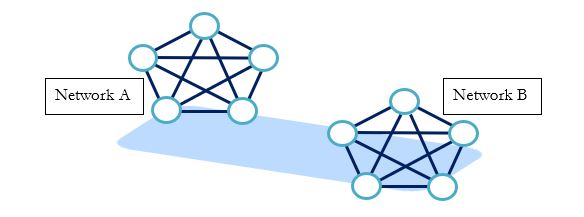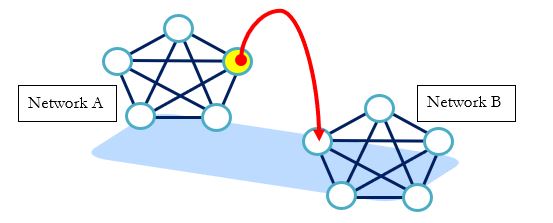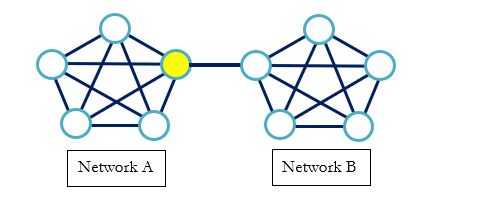Structural Holes (A9)
Burt (1992) argued that networks benefit from having structural hole-spanning members. Diverse resources can flow through such actors into the network. The presence of structural hole-spanning members can therefore offset the hazards of network insularity.
Two closed networks (or clusters) exist, A and B. No members of either population interact. A structural hole (the blue floor area) separates them from each other and from any other networks.

A member of Network A communicates with a member of Network B. By linking the networks, the individual in Network A becomes the “broker” (or “gatekeeper”). The two groups might not begin interacting, but they are connected through two communicating members – so the possibility for future interaction has increased.

Since Network A and B are now connected, interaction begins. Over time, provided the interaction is beneficial for both networks, the structural hole shrinks and vanishes.

